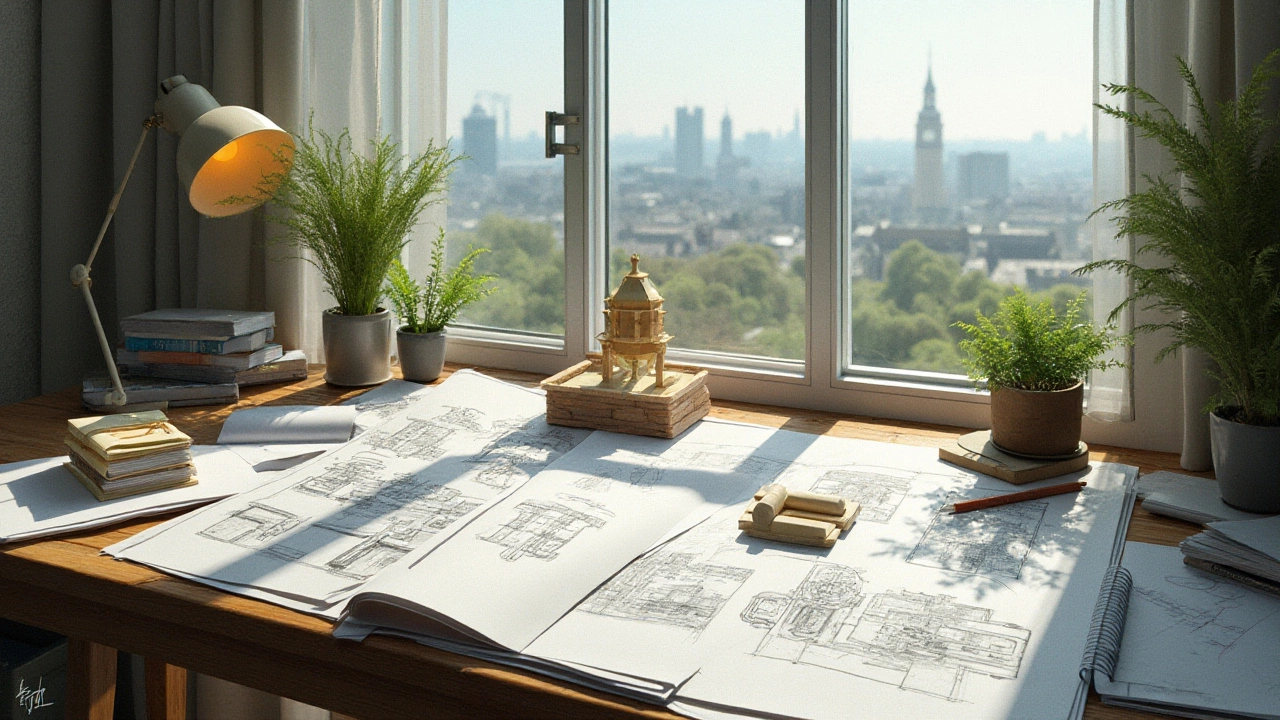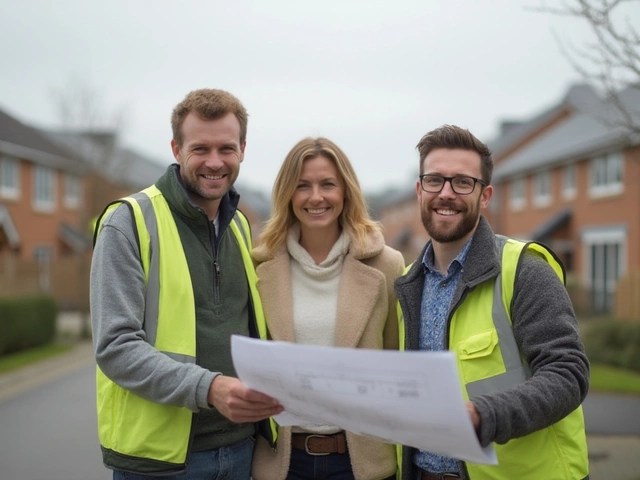Architecture is not just about building structures; it's about creating spaces where people can thrive. These structures, be it your home, workplace, or a place of leisure, are products of comprehensive architectural services. From dream-conception to ribbon-cutting, architects play pivotal roles at every stage of construction.
To bring an idea to life, various services are employed, including the initial design and complex project management. Architects balance creativity with practicality, navigating through complex building regulations while staying true to a client's vision. Alongside, they are responsible for ensuring designs are sustainable and environmentally friendly.
Moreover, architects work closely with clients to offer tailored consultations and feasibility studies. This guide aims to dive into these services, unraveling the intricacies and the impact they have on the built environment.
- Introduction to Architectural Services
- Architectural Design and Planning
- Project Management and Coordination
- Interior Design and Space Planning
- Sustainability and Eco-Friendly Practices
- Consulting and Feasibility Studies
Introduction to Architectural Services
Diving into the realm of architectural services, one uncovers a multifaceted landscape that is as creative as it is technical. The journey begins by understanding what architectural services entail—the seamless mix of art and science that builds the backbone of any successful construction project. Architectural services are like the orchestra conductor, ensuring each part of the build plays in harmony. They involve a series of intricate processes, staging everything from the initial consultation to the final walk-through. Architects not only design aesthetically pleasing structures but also ensure they function effectively and stand the test of time.
A critical component of architectural design is catering to the clients' needs while balancing them with legal, environmental, and technical constraints. When a client engages an architect, they're tapping into a wealth of expertise. The architect assesses the viability of a project through consultations and drafts initial blueprints that reflect the client's vision. But architects do not work in isolation; they collaborate with civil engineers, surveyors, and zoning experts to ensure everything from the foundations to the rooftops aligns with safety and regulatory standards. A crucial part of architectural services is this collaborative approach to problem-solving and design execution.
This field doesn't shy away from innovation. The evolution of sustainable architecture has recently become a central focus. Architects are uniquely positioned to integrate eco-friendly elements, such as green roofs and energy-efficient systems, into their designs. Not only do these features reduce a building's carbon footprint, they also often lead to long-term cost savings for the owner. These design solutions reflect a growing trend where sustainable architecture is at the forefront, shaping a horizon where buildings harmonize with the environment. As the famous architect, Frank Lloyd Wright once said,
"The mother art is architecture. Without an architecture of our own, we have no soul of our own civilization."This sentiment underscores the profound impact architectural services have on shaping communities and cultures.
Access to cutting-edge technologies like Building Information Modeling (BIM) has revolutionized architectural practice. BIM allows for the creation of detailed digital simulations of buildings, enabling architects to foresee and resolve potential issues before construction commences. This preemptive problem-solving capability not only saves time but also resources. By using such technology, architecture consulting can provide more accurate timelines and cost estimates, increasing client trust and satisfaction. Clients can even experience virtual walk-throughs of their spaces before a single brick is laid, ensuring alignment with expectations and demands.
In considering the future of architectural services, one cannot ignore the influence of urbanization. With over half the world's population living in cities, architects face the challenge of creating livable, sustainable urban environments. The demand for innovative residential and commercial spaces that maximize space while minimizing environmental impact is at an all-time high. Architectural services are at the center of this urban renaissance, offering solutions that not only meet the demands of today but anticipate the needs of tomorrow. Whether it’s revitalizing historical structures with modern amenities or designing entirely new neighborhoods, architectural services are indispensable.
Architectural Design and Planning
In the realm of architectural design and planning, creativity meets precision to transform abstract ideas into functional blueprints. Esteemed architects often say, "The role of an architect is to spread awareness about the quality of the built environment," capturing the essence of this phase perfectly. Initially, the process begins with a series of consultations where architects engage with clients to understand their vision, needs, and budget. It's less about adding features and more about crafting seamless integrations within space constraints and environmental guidelines. These discussions lay the cornerstone for creating an architectural program that aligns design objectives with the client's vision.
The next step involves conceptual design, where architects use sketches, mood boards, and 3D models to develop the building's form and function. This stage is crucial for determining aspects like room layout, spatial organization, and aesthetics, in harmony with the zoning and building codes. Advanced tools like BIM (Building Information Modeling) play a vital role here, enabling architects to simulate the model’s performance in real-world conditions. This not only enhances design accuracy but also streamlines future phases such as project management and coordination. An emphasis on sustainable architecture ensures that these designs actively consider resource efficiency, thermal comfort, and reduced carbon footprint.
A key component of designing is site analysis, where architects meticulously examine the building site to assess factors like topography, existing infrastructure, climate, and local culture. Understanding these elements allows them to envisage how the planned structure will sit within its surroundings, optimizing views, landscape integration, and traffic flow. Historical data shows that a well-considered site analysis can reduce construction costs by up to 15%. While designing individual elements, architects also undertake problem-solving tasks, like maximizing natural light or improving energy efficiency, often experimenting with innovative materials or cutting-edge technologies.
Design Development and Pragmatism
In the next phase, known as design development, the initial approved concept is further refined into detailed drawings and specifications. Collaboration is the heart of this stage, where architects coordinate with engineers and interior designers to determine structural integrity, electrical layouts, and material specifications. This phase is a balancing act between aspirations and pragmatic solutions, aligning aesthetic desires with technical requirements. By involving relevant stakeholders early on, unforeseen challenges can be minimized, thus saving time and resources.
The budget remains a pivotal focus throughout planning. Architects often explore multiple design solutions at varying price points, enabling clients to make informed decisions. They integrate cost-effective materials without compromising on quality or sustainability. With the growing demand for sustainable architecture, architects now prioritize eco-friendly materials and energy-efficient systems within the design, leveraging natural resources optimally. For larger projects, phased construction is sometimes advisable, spreading costs over time and allowing for adjustments based on initial phase learnings.
Finally, detailed documentation is a vital part of architectural design and planning. Apart from guiding the construction process, these documents hold legal significance and serve as a vital reference in future renovations or legal disputes. Proper documentation includes not only drawings but also specifications on materials, finishes, and fixtures. Effective planning boils down to the details, ensuring that every element aligns with the set vision and standards. It's worthwhile to remember a quote by notable architect Le Corbusier: "A great building must begin with the unmeasurable, must go through measurable means when it is being designed and in the end must be unmeasurable." This captures the enchantment and complexity of transforming visions into architectural realities.
Project Management and Coordination
Successfully transforming a blueprint into a fully realized building requires more than just architectural design; it demands effective project management and coordination. This crucial service integrates all elements of a building project, ensuring that each phase is orderly and efficient. The primary goal here is to align all stakeholders—from architects and contractors to clients and suppliers—towards a common objective: the timely and cost-effective completion of the project. This coordination minimizes risks and helps deliver the project within budget, often employing strategies akin to those used in the Agile development model.
An essential component of project management is scheduling, which plans the sequences and timing of each building phase. This not only involves laying the foundations but coordinating complex systems like plumbing, electrical, and HVAC installations. To keep things running smoothly, project managers often work with a Gantt chart, a popular tool that visually maps out the timeline and progress of a project. As the project unfolds, frequent site inspections are conducted to ensure that every detail is in line with the initial design.
Effective communication is another cornerstone of this service. Project managers act as the go-between, facilitating seamless communication among all parties involved. This includes regular meetings and updates to keep everyone informed on progress, potential issues, and revised timelines. Developing a solid communication plan can prevent misunderstandings and keep everyone on the same page. Taking care of these details is imperative, as slowdowns or miscommunications can lead to increased costs and delayed timelines, impacting the project's success.
"In my opinion, project management in architecture is not just about managing the workflow but more about managing expectations," says Emily Baker, a respected project manager with over two decades of experience. "It's crucial to keep both the client and the team aligned. Communication is often underestimated, but it's the key to delivering successful projects."
The financial aspect also falls under project management. Budgets must be meticulously maintained, with every expenditure accounted for and justified. Any deviations from the financial plan must be calculated and adjusted strategically to ensure that the overall project remains financially viable. With large projects, managers may also utilize contingency funds to cover unforeseen expenses, adding a layer of financial security to the operation.
Let's not forget the importance of quality control during a building process. Quality checks must be in place at every stage to ensure the integrity, safety, and reliability of the final product. This involves regular audits and inspections. Project managers coordinate with quality assurance professionals to guarantee that all materials and processes meet the specified standards and requirements. This ensures the completed building is not only beautiful and functional but also stands the test of time.
Sustainable architecture principles can also be incorporated at this stage. Project managers might consult with experts to introduce eco-friendly practices throughout the construction phase. By prioritizing sustainability, they aim to minimize the environmental footprint and make the building as efficient as possible. This approach resonates with a growing number of clients who value green solutions and is increasingly becoming a standard practice in modern architecture.

Interior Design and Space Planning
Interior design and space planning are where architecture meets art. These aspects of architectural services are akin to adding the soul to a body, breathing life into spaces we inhabit. When architects design interiors, they consider much more than just furniture and décor. It's about creating an environment that aligns with the lifestyle and functionality needs of its occupants, making architectural design paramount in the process.
Creating a harmonious balance in space planning involves a keen understanding of form, function, and flow. Spacing dictates how individuals interact with the environment—whether a cozy home, a bustling office, or a serene public library. Architects employ flow principles to ensure seamless movement and ease of access within a building. It's fascinating how minute details like the distance between workstations can affect workflows in corporate settings.
"Good design is obvious. Great design is transparent." – Joe Sparano
With the rise of open-concept living, interior planning has taken on new challenges. Maximizing natural light, ensuring privacy, and maintaining acoustic harmony are just a few considerations. Designers often collaborate with psychologists to understand the impact of color schemes and textures on mood and productivity, making space planning not just a physical task but a psychological one too.
In the modern world, where space is a luxury, the efficiency of space planning is more critical than ever. Imagine a tiny urban studio apartment that feels expansive due to strategic layout decisions—a triumph of design over constraints. Technologies like augmented reality help clients visualize the end results long before they're executed, ensuring that every interior design decision supports comfort, accessibility, and style.
Sometimes, it's not just about filling a space but leaving it intentionally blank. Negative space allows the eyes to rest, benefiting both aesthetic appeal and functionality. Symbols and motifs in interior design often tell stories, be it cultural heritage in a family home or corporate ethos in a company headquarters.
Sustainability and Eco-Friendly Practices
In recent years, the thrust towards sustainable architecture has gained significant momentum, reflecting the growing awareness and responsibility to safeguard our planet. Integrating sustainable architecture into the design process is not merely a trend but a commitment to creating a healthier environment for both current and future generations. Architects and builders are now tasked with considering every aspect of a building's lifecycle — from concept to demolition — to minimize ecological impact.
A key aspect of sustainability in architecture is the selection of materials. Utilizing recycled or locally sourced materials not only reduces transportation emissions but also supports local economies. Bamboo, for instance, is a fast-growing, renewable material that serves as an excellent substitute for traditional hardwood. Similarly, reclaimed wood and recycled steel not only bring unique aesthetic qualities but also lower carbon footprints. Beyond materials, sustainable architecture promotes energy efficiency through smart design and innovative technologies.
Building services such as strategic window placement facilitate natural lighting, thereby decreasing dependence on artificial lights during daylight hours. The implementation of solar panels, energy-efficient HVAC systems, and rainwater harvesting mechanisms is becoming increasingly standard in new constructions. These technologies ensure that buildings generate and conserve energy, reducing utility costs and environmental impact. According to the International Energy Agency, buildings account for nearly 40% of total global energy consumption, underscoring the necessity for green practices.
Water conservation and waste management are also vital aspects of eco-friendly architecture. Low-flow plumbing fixtures and greywater recycling systems actively contribute to reducing water wastage. In modern architecture, evidence of these practices can be seen in the increasing popularity of green roofs or living walls, which add a natural insulation layer while transforming urban spaces into green havens. These not only improve air quality but also enhance biodiversity within an urban setting.
Innovations like these highlight the profound role architects play in influencing environmental policies and practices. As Frank Lloyd Wright eloquently put it once,
"Study nature, love nature, stay close to nature. It will never fail you."This philosophy drives the endeavor to adapt buildings to their environments rather than forcing the environment to adapt to them. By focusing on site-specific solutions, architects create structures that blend seamlessly with their surroundings, mitigating negative environmental impacts.
Education and advocacy surrounding sustainable design practices are essential. Architects often collaborate with urban planners, environmental engineers, and the local community to forge practices that meet both ecological and societal needs. This multidisciplinary approach facilitates the creation of buildings that are not only environmentally responsible but also socially equitable. In this journey towards sustainability, continuous learning and adaptation are vital, making the architecture field one of the most dynamic arenas for combating environmental challenges.
Consulting and Feasibility Studies
Delving into the heart of architectural ventures, consulting and feasibility studies form a crucial stage that can significantly impact the outcome of a project. These services are designed to answer pivotal questions about a project’s viability, guiding clients through a maze of uncertainties and potential obstacles. Architects bring their expertise to assess site conditions, zoning laws, budget constraints, and client needs, providing a comprehensive analysis that lays the groundwork for a successful build. This stage involves a thoughtful examination of various facets including legal, financial, and environmental considerations. Engaging in a feasibility study not only underscores the project's potential pitfalls but also shines a light on unique opportunities that might otherwise go unnoticed.
A consultant will embark on a methodical journey, beginning with a thorough evaluation of the intended site. This assessment observes topographical features, climatic conditions, and existing infrastructure, offering insights into how these elements can influence the architectural design. The evaluation delves into the nitty-gritty of utilities, accessibility, and neighboring developments to ensure compatibility and harmony with the surrounding urban fabric. Understanding these factors aids in crafting a vision that is aligned with regulatory frameworks while harnessing the site's innate advantages.
Further into the consulting process, legal compliance elevates in priority. Architects meticulously study zoning laws, building codes, and other regulatory guidelines to foresee any possible red flags. These checks are indispensable, as they help avoid costly legal hurdles later. For instance, density requirements or height restrictions can dramatically shape the scope of a project. A famous quote by Frank Lloyd Wright, "An architect's most useful tools are an eraser at the drafting board, and a wrecking bar at the site," underscores the importance of foresight in architectural planning.
Feasibility studies also offer a deep dive into the financial aspects of constructing a building. Through detailed cost estimation and value engineering, architects provide a realistic forecast of the budget required at each phase of the project. This financial modeling assists in securing financing and making informed decisions that align with the client's monetary vision. Adept consultants ensure cost-effective solutions without compromising on quality, often uncovering innovative materials or technologies that enhance longevity and sustainability.
Embracing sustainable architecture is another cornerstone of modern feasibility studies. Consultants advocate for eco-conscious practices, evaluating energy efficiency, resource availability, and potential for renewable integrations. By addressing these issues early on, they help craft buildings that tread lightly on the planet, contributing to greener cities. Incorporating such features not only fulfills ethical standards but can also translate to long-term savings for developers and occupants alike.
Ultimately, consulting and feasibility studies are invaluable in setting the stage for successful architectural projects. They offer a blueprint for navigating potential challenges and crafting an actionable roadmap. With this foundation, stakeholders can move forward with confidence, knowing that their endeavor is well-conceived, viable, and poised to add enduring value to the landscape it inhabits. In an era where the built environment constantly evolves, these studies are indispensable, blending art, science, and economic pragmatism to transform dreams into reality.





